 by our College Data Analytics Team
by our College Data Analytics TeamUMary total enrollment is approximately 3,799 students. 1,812 are undergraduates and 714 are graduate students.
Male/Female Breakdown of Undergraduates
The full-time UMary undergraduate population is made up of 60% women, and 40% men.
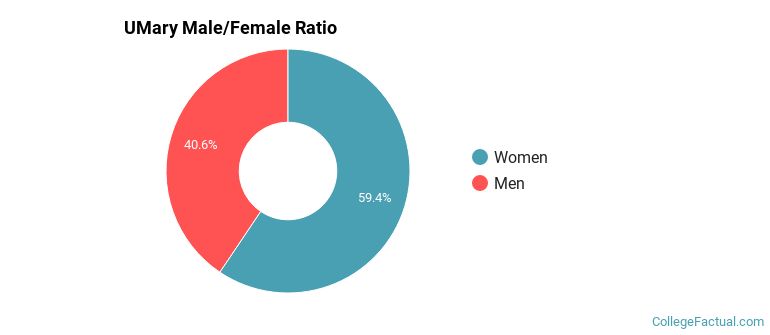
For the gender breakdown for all students, go here.
UMary Racial/Ethnic Breakdown of Undergraduates

| Race/Ethnicity | Number |
|---|---|
| White | 1,450 |
| Unknown | 256 |
| Multi-Ethnic | 39 |
| Black or African American | 33 |
| Asian | 17 |
| Native Hawaiian or Pacific Islander | 6 |
| Hispanic | 0 |
| International | 0 |
See racial/ethnic breakdown for all students.
Male/Female Breakdown of Graduate Students
About 71% of full-time grad students are women, and 29% men.
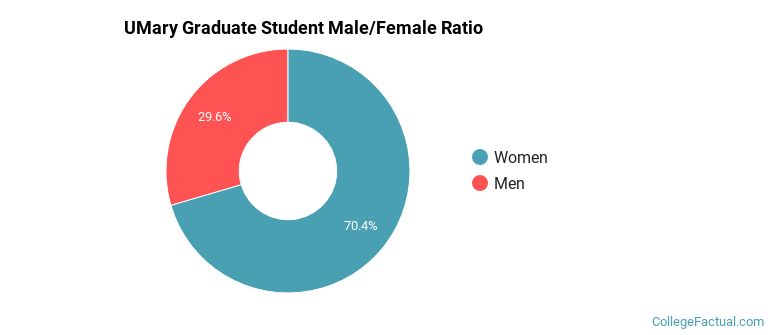
For the gender breakdown for all students, go here.
UMary Racial-Ethnic Breakdown of Graduate Students
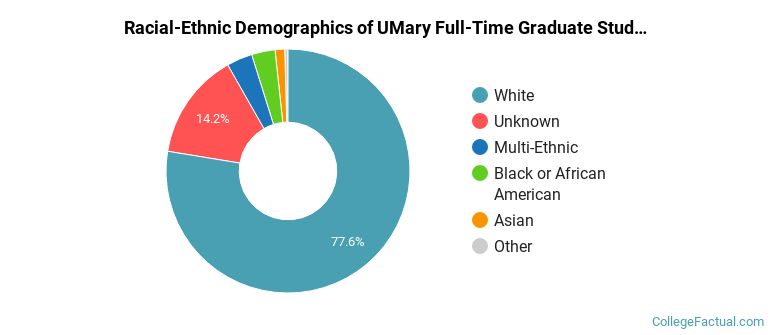
| Race/Ethnicity | Number |
|---|---|
| White | 575 |
| Unknown | 69 |
| Black or African American | 22 |
| Multi-Ethnic | 22 |
| Asian | 9 |
| Native Hawaiian or Pacific Islander | 1 |
| International | 1 |
| Hispanic | 0 |
See racial/ethnic breakdown for all students.
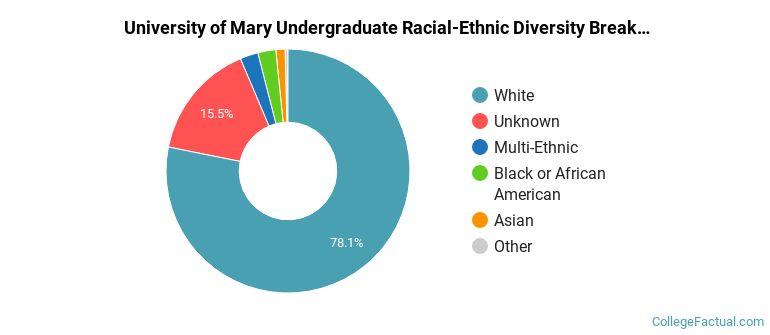
| Race/Ethnicity | Number |
|---|---|
| White | 2,954 |
| Unknown | 504 |
| Multi-Ethnic | 103 |
| Black or African American | 85 |
| Asian | 50 |
| Native Hawaiian or Pacific Islander | 8 |
| International | 3 |
| Hispanic | 0 |

There are approximately 2,372 female students and 1,427 male students at UMary.
UMary ranks 414 out of 2,183 when it comes to geographic diversity.
52.64% of UMary students come from out of state, and 2.21% come from out of the country.

The undergraduate student body is split among 28 states (may include Washington D.C.). Click on the map for more detail.
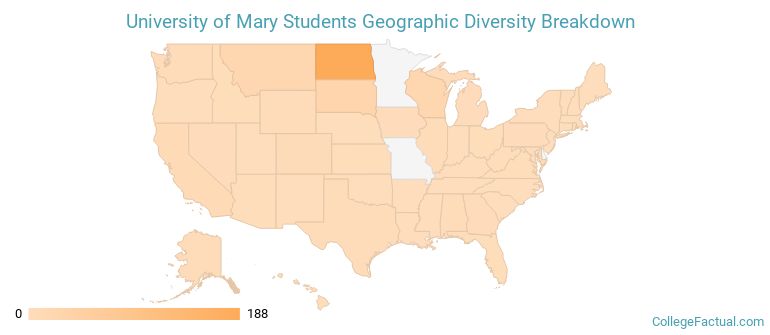
| State | Amount |
|---|---|
| North Dakota | 188 |
| North Dakota | 188 |
| South Dakota | 30 |
| Montana | 23 |
| Wisconsin | 23 |
A traditional college student is defined as being between the ages of 18-21. At UMary, 38.04% of students fall into that category, compared to the national average of 60%.

| Student Age Group | Amount |
|---|---|
| 20-21 | 750 |
| 22-24 | 706 |
| 35 and over | 569 |
| 18-19 | 542 |
| 25-29 | 483 |
| 30-34 | 261 |
| Under 18 | 0 |
Footnotes
*The racial-ethnic minorities count is calculated by taking the total number of students and subtracting white students, international students, and students whose race/ethnicity was unknown. This number is then divided by the total number of students at the school to obtain the racial-ethnic minorities percentage.
References
Department of Homeland Security Citizenship and Immigration Services
Image Credit: By Jte288~commonswiki under License
Read College Factual's Diversity Ranking Methodology.